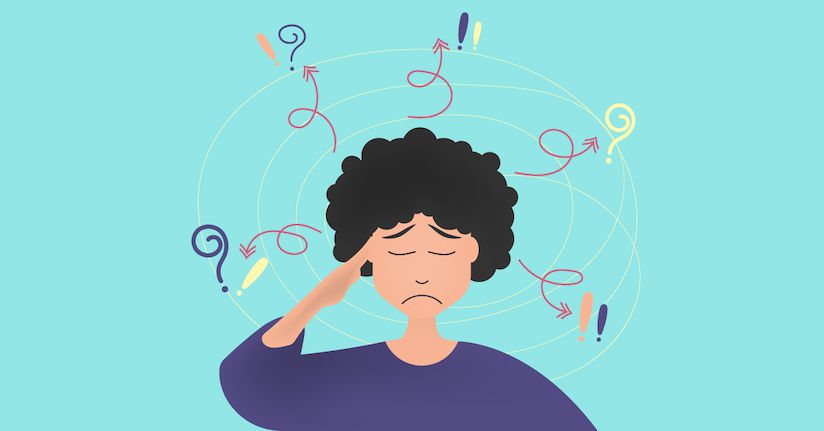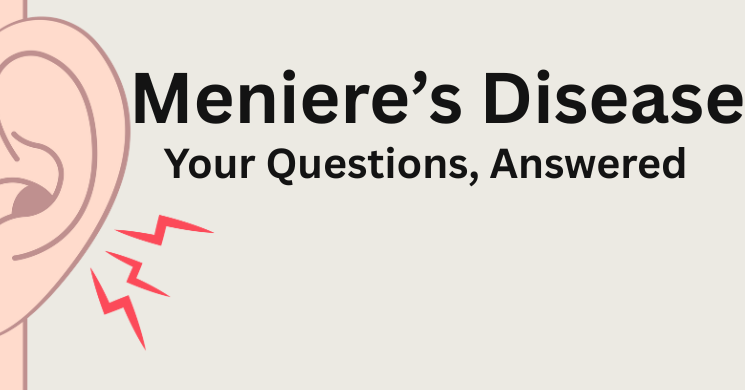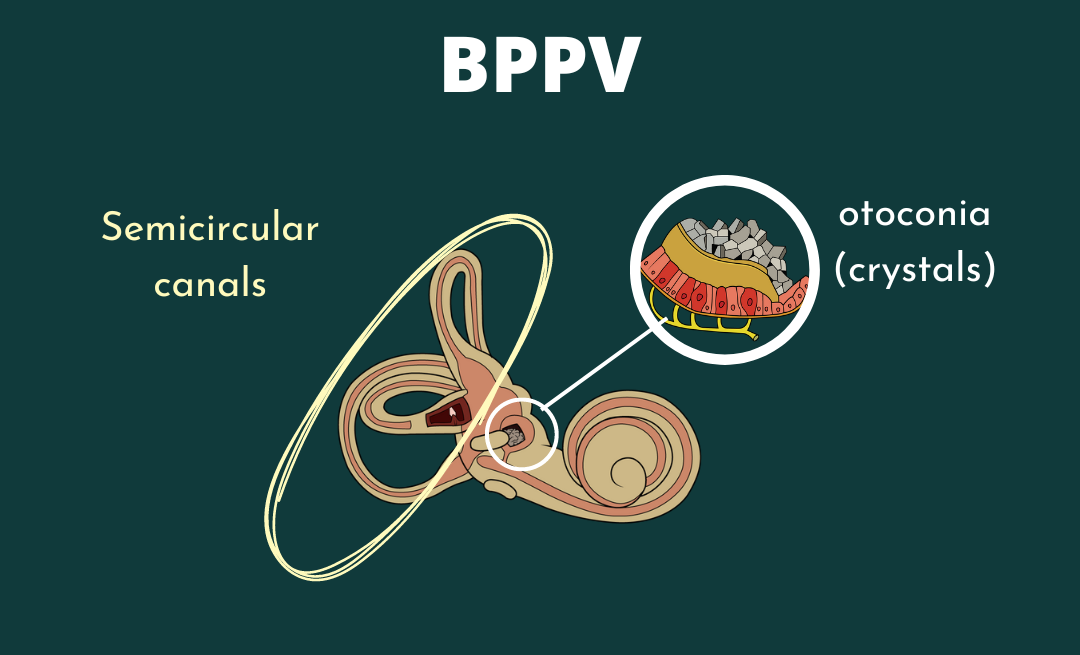Vestibular disorders & vestibular symptoms
The vestibular system, a remarkable and intricate network within our body. The Vestibular System plays a fundamental role in maintaining balance, equilibrium, and spatial orientation. Comprising various components, this system allows us to navigate the world around us with stability and coordination. The Vestibular System is your balance system, and it works with other body systems, specifically your proprioception and your vision, to keep you upright, track where you are in space, how fast you’re going, and more. If you have a vestibular disorder, any number of vestibular symptoms can occur, some of which may affect your balance and stability, while others may cause dizziness and lightheadedness.
The function of the Vestibular System
The primary function of the vestibular system is to provide the brain with information about the body’s motion and position relative to gravity. This sensory input is crucial for controlling our balance and coordinating movements. Essentially, the vestibular system serves as our internal gyroscope, constantly monitoring changes in head position and movement.
Imagine standing upright and tilting your head to the side—your vestibular system detects this change and signals the brain, allowing you to adjust your posture to stay balanced. Whether we are walking, running, or simply shifting our gaze, the vestibular system works seamlessly to ensure our body maintains equilibrium.
When something goes wrong with the vestibular system, that’s when we get vestibular symptoms!
1. Pieces of the Vestibular System
To comprehend the intricate workings of the vestibular system, it’s essential to understand its key components. It has quite a few pieces lined up together, and something can go wrong at any of the points in the system.
- The Vestibular System: The inner ear houses cochlea (your hearing organ) and the vestibular organs, consisting of the utricle and saccule, and three semicircular canals. These structures are filled with fluid and specialized sensory cells that detect head movements in all angles and directions. This helps us to best understand our spacial whereabouts and balance. Meniere’s Disease is a vestibular disorder that occurs in the vestibular system itself.
- Vestibular Nerve: The Vestibulocochlear nerve sends signals from the inner ear to the brain, the vestibular nerve plays a crucial role in relaying information about spatial orientation and motion. Things can go wrong here, like vestibular neuritis and Acoustic neuroma, for example. It connects the inner ear to the brainstem, forming a vital link in the vestibular pathway.
- Brainstem and brain: the brainstem processes and integrates signals from the vestibular nerve to the brain. the brain and brainstem coordinates reflexes, eye motion, gaze stability, posture, and more! Vestibular Migraine is the most common vestibular disorder that happens centrally (AKA in the brain and spinal cord)
2. Pieces of the Vestibular System
To comprehend the intricate workings of the vestibular system, it’s essential to understand its key components. It has quite a few pieces lined up together, and something can go wrong at any of the points in the system.
- The Vestibular System: The inner ear houses cochlea (your hearing organ) and the vestibular organs, consisting of the utricle and saccule, and three semicircular canals. These structures are filled with fluid and specialized sensory cells that detect head movements in all angles and directions. This helps us to best understand our spacial whereabouts and balance. Meniere’s Disease is a vestibular disorder that occurs in the vestibular system itself.
- Vestibular Nerve: The Vestibulocochlear nerve sends signals from the inner ear to the brain, the vestibular nerve plays a crucial role in relaying information about spatial orientation and motion. Things can go wrong here, like vestibular neuritis and Acoustic neuroma, for example. It connects the inner ear to the brainstem, forming a vital link in the vestibular pathway.
- Brainstem and brain: the brainstem processes and integrates signals from the vestibular nerve to the brain. the brain and brainstem coordinates reflexes, eye motion, gaze stability, posture, and more! Vestibular Migraine is the most common vestibular disorder that happens centrally (AKA in the brain and spinal cord)
3. Common Vestibular Symptoms
Vestibular Symptoms are often symptoms of imbalance and dizziness. These include, but are not limited to:
- Imbalance
- Vertigo (room spinning)
- Dizziness
- Light headedness
- Heavy headedness
- Gaze instability
- Internal Rocking and Swaying
- Feeling like you’re on a boat
- Difficulty walking in the dark
- Disorientation
Common symptoms that are also associated with vestibular disorders, but aren’t necessarily caused by the vestibular system itself:
- Anxiety
- Fear
- Depression
- Heart palpitations
- Agoraphobia
4. Triggers of Vestibular Symptoms
Vestibular symptoms come from many places, and triggers are never causes. The cause of your vestibular disorder will differ from the next person’s because some are caused by migraine disorders while others are caused by infection. Getting to the bottom of this will require opinions from vestibular physical therapists, neuro-otologists, neurologists, an ENT, and maybe even a headache specialist! Triggers will be different for everyone, of course, which means you will have different triggers than others. But, here are a few that can trigger flares or attacks:
- Excessive Light
- Excessive Sound
- Head motion (especially at first)
- Exercise (at first)
- Increased stress
- Anxiety
- Being sick
- Menstrual cycle
- Busy environments (like the grocery store)
- Travel
5. Should I avoid my Vestibular Symptom triggers?
This specific question is one of the most common, and the most complex. The short answer is no, don’t avoid if you can. However, sometimes we do want to avoid these triggers, too!
Avoiding your vestibular symptom triggers can come in handy sometimes. Specifically, if/when you are having a higher symptom day already, then avoiding triggers can be helpful. This is because if we do triggering activities while we are triggered and get even dizzier or more anxious, our body will continue to pair dizziness and fear with this specific task. The Grocery store is a great example here. If you are having a high symptom day when you wake up, for whatever reason, and then you go to the grocery store it’s likely you’ll get even dizzier. If this dizziness is triggered and makes you feel more anxious, frustrated, or fearful of the symptoms then it’s likely reinforce the dizzy-anxious dizzy cycle further into your brain. We want to avoid this. So, in this situation, it’s best to avoid the trigger. For more on this, I recommend the book The Way Out by Alan Gordon.
Otherwise, we want to try and engage with our active triggers in order to make it so they’re not so triggering for you. For example, if moving your head right and left causes symptoms, that is going to be something to not avoid. However, it is something you should work on with your vestibular PT in order to make this easier with time, avoid the fear and anxiety, and be able to ground yourself back to baseline between repetitions.
6. Treating your Vestibular Symptoms
Proper treatment of your vestibular symptoms is a comprehensive process, it requires a few different steps and providers. There is no single best option that exists for everyone, rather a few things all piled up together to create your personal treatment pie. This not only involves getting opinions from different providers and programs, but also requires us to remember that we need to know what each provider does so we can ask for the right thing.
Medical treatments for Vestibular Symptoms
Your medical doctor’s job is to provider you with medical treatments. This can be medications, supplement recommendations, testing, and referrals to other providers. Medications and medical treatments exist for Vestibular Migraine, Meniere’s Disease, Acoustic Neuroma, Superior Canal Dehiscence Syndrome, MDDS, and more. However, diagnoses like Vestibular Neuritis do not require medical treatment as much as they require physical therapy and mindset work.
Testing if you’re dizzy should consist of brain imaging (MRI/CT), a videonystagmography exam (VNG), other vestibular testing (like an ECOG, VEMP, etc.). You could also get bloodwork to see if you have any deficiencies.
Surgical treatments for Vestibular Symptoms
Some treatment protocols for certain vestibular disorders need surgery. Diagnoses like Acoustic Neuroma, Meniere’s Disease, and Superior Canal Dehiscence often call for surgical intervention. Be sure to interview a few surgeons before you determine which is best for you.
Physical treatments for Vestibular Symptoms
Vestibular Rehabilitation Therapy is often a great treatment for vestibular symptoms! A Vestibular Rehab Therapist will help you by figuring out your goals and working towards doing them without dizziness. a Vestibular Therapist can help you return to exercise, reduce visual vertigo, improve your balance, and more!
The most comprehensive treatment plan for Vestibular Symptoms
The most comprehensive treatment protocol you can get is always the best one. This will help you cover all your bases, raise your vestibular threshold, and be the least dizzy possible. This needs support and consistency. The best way to go about this is joining Vestibular Group Fit. VGFit is the comprehensive group program dedicated to helping you feel better. We work through the pillars of movement, mindset, support, and education. This program helps members feel better, less dizzy, and finally have freedom over their vestibular symptoms!
Want to finally feel better? I want that for you, too!
and we can get you there! Join us in Vestibular Group Fit today!







